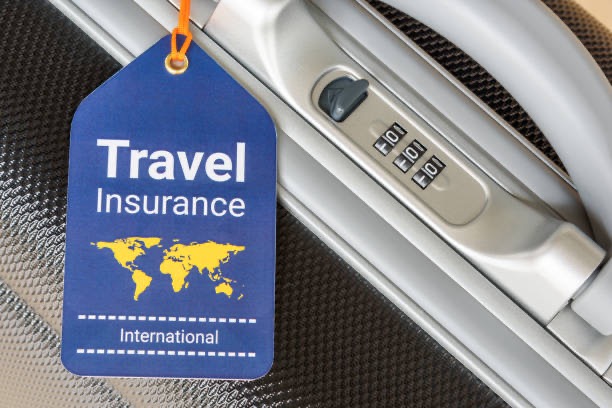I’ll be honest—I never used to think much about buying travel insurance. For years, I booked trips without giving it a second thought. But travel has changed, and so have the risks. From flight delays and lost bags to medical emergencies abroad, the unexpected feels more common than ever. That’s why travel insurance has become less of a “nice extra” and more of a necessity.
The right policy doesn’t just protect your trip investment—it protects your peace of mind. This guide will walk you through why travel insurance matters, what to look for, and how to choose the coverage that best fits your journey.
Why Travel Insurance Matters
Travel insurance helps safeguard you from financial loss and logistical nightmares when things don’t go according to plan. Some of the most common reasons travelers buy insurance include:
- Trip cancellations or interruptions due to illness or emergencies
- Medical expenses while traveling abroad
- Emergency evacuations in remote or high-risk destinations
- Lost, stolen, or delayed baggage
- Compensation for unexpected travel delays

What to Look for in a Travel Insurance Policy
Before you purchase a policy, review the following coverage areas:
Emergency Medical Coverage
Look for at least $50,000 for international trips and $100,000+ for remote destinations.
Emergency Evacuation
Experts recommend $250,000–$1 million in coverage, especially if medical care is limited where you’re going.
Trip Cancellation and Interruption
Choose policies that cover 100% of prepaid costs for cancellations and at least 125–150% for interruptions.
Pre-Existing Condition Waivers
If you have ongoing health issues, buy early—usually within 14 days of your first deposit—to ensure coverage.
Adventure and Activity Coverage
If you’re skiing, diving, or hiking, make sure that your plan includes these activities.
Cancel for Any Reason (CFAR)
An optional add-on that allows cancellation for reasons not listed in the policy. Typically reimburses 50–75% of trip costs.
Credit Card Travel Coverage
Premium credit cards like the Chase Sapphire Reserve or American Express Platinum include useful travel protections. These often cover:
- Trip cancellation or interruption (usually up to $10,000 per trip)
- Trip delay benefits (up to $500 after 6+ hours)
- Lost or delayed baggage
- Rental car insurance
While valuable, these benefits have major gaps. Medical coverage is minimal (often $2,500 or less), and evacuation protection is rare. Relying solely on card coverage for international or adventure travel can be risky.

Third-Party Travel Insurance
Independent providers such as Allianz, Travel Guard, and Seven Corners typically offer more comprehensive plans than credit cards or tour operators. Their benefits often include:
- Emergency medical coverage of $50,000–$100,000+
- Emergency evacuation up to $1 million
- Trip cancellation coverage for 100% of prepaid costs
- Trip interruption at 125–150% of trip cost
- Higher baggage and delay limits
- Adventure activity coverage and CFAR upgrades
If you travel often, consider an annual plan for more value (which is what we personally do). The Hallz Travel can advise and help obtain the best policy for you.
Travel Insurance Comparison Chart
| Coverage Type | Tour/Operator Insurance | Credit Card Benefits | Third-Party Insurance |
|---|---|---|---|
| Trip Cancellation | Covers prepaid costs; sometimes vouchers | Limited ($5k–$10k per trip) | Covers 100% of nonrefundable costs |
| Trip Interruption | Yes, often capped | Limited; max ~$10k | 125–150% of trip cost |
| Emergency Medical | Moderate ($10k–$50k) | Very low ($2.5k or less) | $50k–$100k+ standard |
| Emergency Evacuation | Often limited (~$100k) | Rare or hotline-only | $250k–$1M+ recommended |
| Baggage Protection | Included but limited | $1k–$3k typical | $1k–$2.5k |
| Travel Delay | Modest coverage | $500–$1,000 (after 6+ hrs) | $500–$1,500 |
| Pre-Existing Conditions | Sometimes covered if purchased early | Not covered | Covered if purchased within 14 days |
| Cancel for Any Reason (CFAR) | Sometimes as vouchers | Not offered | Available as upgrade (50–75% refund) |
| Adventure Activities | Often excluded | Rarely covered | Add-ons or included with certain plans |
| Claim Reliability | Mixed | Mixed; slower claims common | Generally clearer and faster |

Common Mistakes Travelers Make
Many people overlook key details when purchasing travel insurance. Avoid these common errors:
- Assuming your health insurance covers you abroad
- Choosing the cheapest plan without reviewing limits
- Forgetting to check evacuation coverage
- Missing the window for pre-existing condition waivers
- Relying only on credit card coverage for international trips
A Smart Approach to Travel Insurance
Here’s a layered strategy most travelers find effective:
- Use credit card benefits for delays, baggage, and partial cancellation coverage.
- Add a third-party plan for strong medical and evacuation protection.
- Consider CFAR coverage if you want maximum flexibility. (Cancel for any reason)
- Read the fine print so you know exactly what’s covered.
Final Thoughts
Every trip is different. A weekend in Paris doesn’t require the same insurance as a safari in Africa or a trek in the Andes. But no matter where you go, having the right coverage ensures you’re prepared for the unexpected.
The goal of travel insurance is to give you peace of mind so you can focus on enjoying your journey. With the right coverage, you can protect your investment, your health, and your adventure—leaving you free to travel with confidence. Please contact us if you have any questions and we are happy to help!

